Top 15 Food You Must Try at Gwangjang Market, South Korea
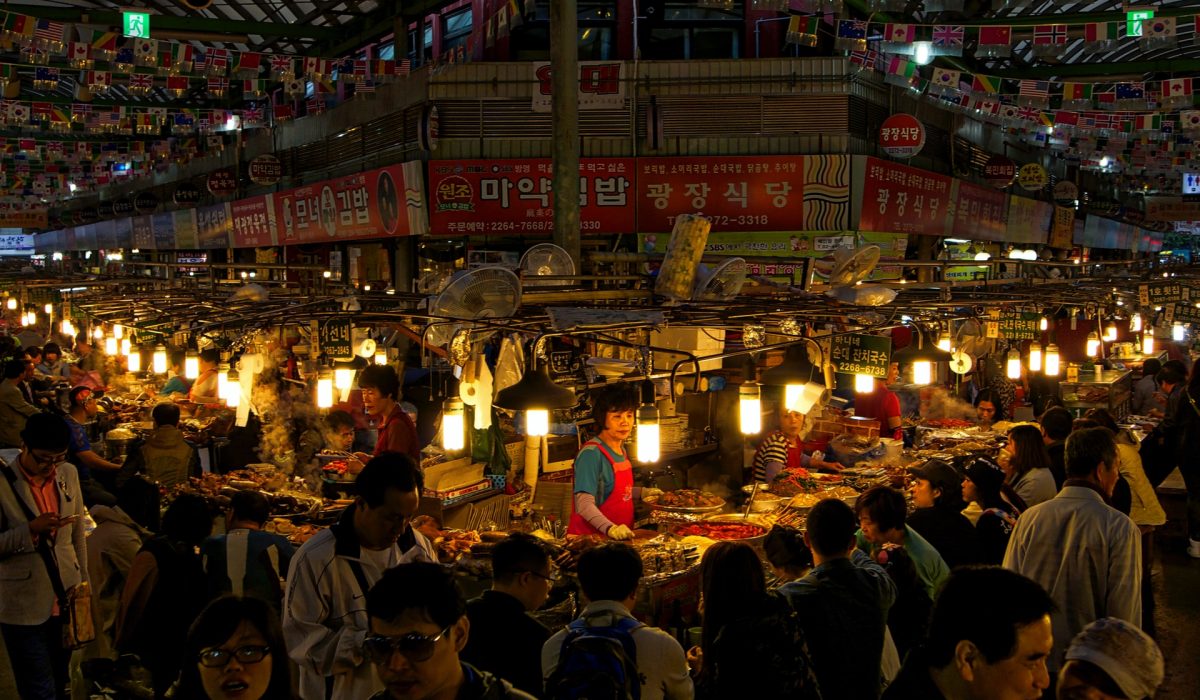
South Korea is one of the hottest countries to visit in Asia with boundless things to do in Seoul alone. No matter how packed your itinerary is, make sure to drop by Gwangjang Market. Gwangjang Market is more than just a tourist destination. It is a symbol of resilience and a testament to the country’s history. Built in the early 20th century during the Joseon Dynasty, it boasts century-old commerce that defied the Japanese disturbance of most Korean markets. While most markets only operate on certain days, Gwangjang Market was the first one to open regularly.
Today, people from all walks of life frequent the market for all various reasons. Although the market is famous for its array of food choices, it is also renowned for other things. At Gwangjang Market, you can also score great shopping deals! From vintage clothes and affordable shoes to silk goods and linen beddings, you will find a lot of souvenirs in Gwangjang Market.
While most people believe that Seoul is one of the most expensive places for a gastronomic tour, it’s partly untrue in Gwangjang Market. Here, you will be able to enjoy a variety of authentic Korean dishes even if you’re on a shoestring budget. You can explore the restaurants in Gwangjang Market from 8:30 AM to 11:00 PM. What’s more, they are also open almost all-year-round.
How to get to Gwangjang Market
By Cab
Riding a cab will be the most convenient way to explore Seoul. But when you hail a cab, make sure that you have the address of the place you’re going to in Hangul. If you can’t speak Hangul or speak English with a Hangul accent, better write them down and show them to the driver. They will appreciate it more. So, to get to Gwangjang Market you can show them this: 서울특별시 종로구 창경궁로 88 (예지동) (88, Changgyeonggung-ro, Jongno-gu, Seoul).
By Train
If you’re traveling to Seoul on a budget and you don’t want to take the cab, you can take the train instead. The closest station to Gwangjang Market is the Jongno 5(o)-ga Station in Subway Line 1. From there you can take Exit 7 and walk for around three minutes to Gwangjang Market. But you can also get off at Euljiro 4(sa)-ga Station in Subway Lines 2 and 5. From there you can take Exit 4 and walk for around five minutes to Gwangjang Market.
Are you now convinced to pack your bags? Well, just don’t forget to learn some useful Korean phrases to bring with you to this amazing country!
What to Eat in Gwangjang Market
1. Mayak Gimbap (마약김밥)
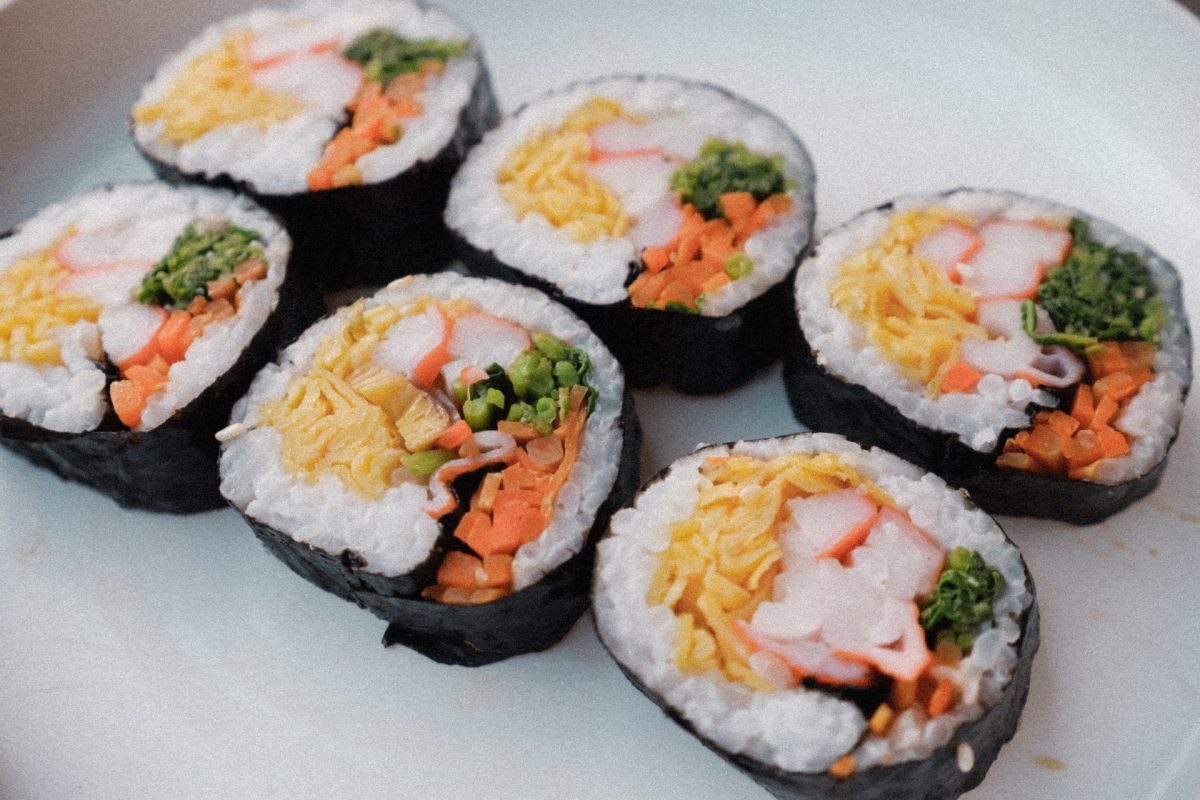
Photo by Devi Puspita Amartha Yahya on Unsplash
Price: ₩3,000 or around US$2.71
Mayak Kimbap is one of the go-to snacks in Gwangjang Market. Similar to Japanese maki, these are also rolled dried seaweed with rice that you can easily toss in your mouth. Usually, the fillings may vary but some of the staples are yellow radish, carrot, cucumber, and egg. In Gwangjang Market, you will see towers of cylindrical kimbap or gimbap with beef, pork, or vegetarian fillings.
Usually, they are sliced into smaller pieces for easier eating. But there are also some who are in a hurry who would just hold them and bite directly to the kimbap. Perhaps it is because of its familiar taste and compatibility that it earned the title “mayak”, which means narcotic drugs.
2. Tteokbokki (떡볶이)
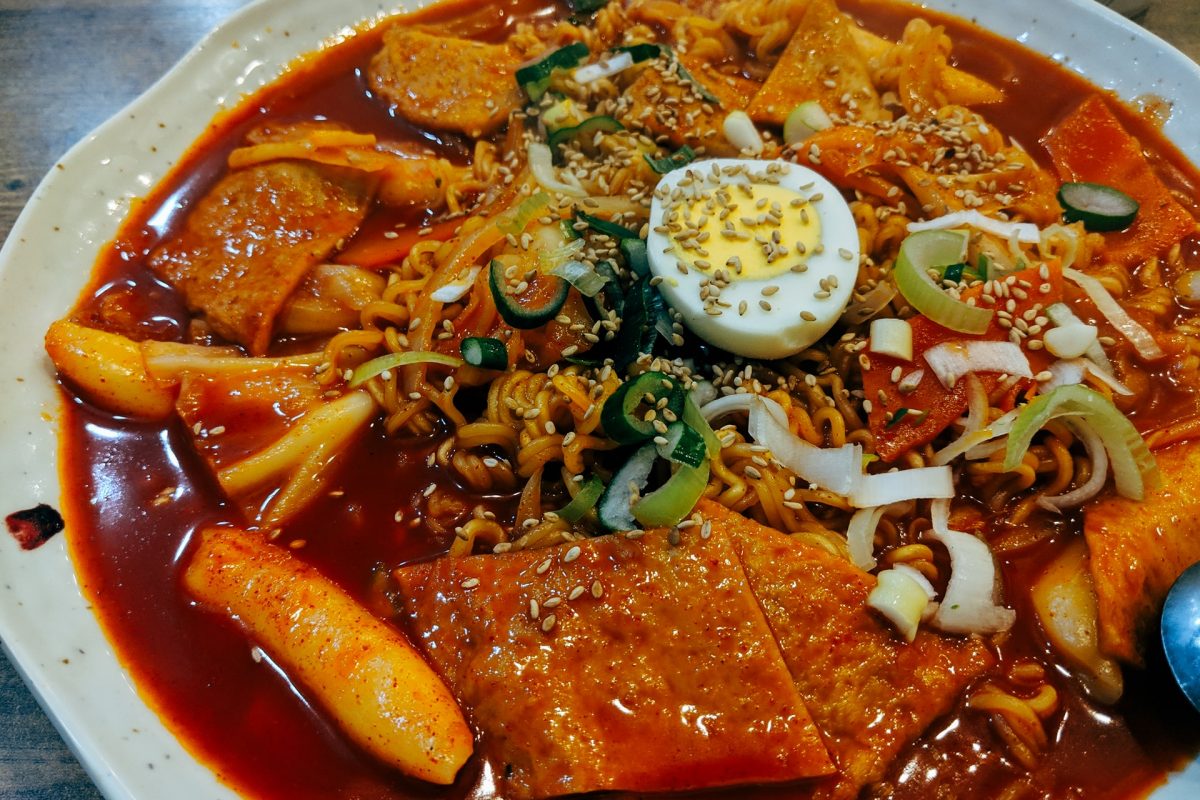
Photo by Markus Winkler from Unsplash
Price: ₩5,000 or around US$5
Literally called a “stir-fried rice cake”, Tteokbokki is another favorite dish at Gwangjang Market. These cylinder-shaped white rice cakes are covered in a combination of gochujang and gochugaru. Or, in English, they are red chili pastes and red chili flakes. Although it has red chili pastes, they still have the sweet taste that makes them addictive in every bite. Some people who can’t tolerate too much spiciness, especially kids, would dunk the rice cakes in water to remove the red pastes and enjoy the chewy rice cakes. But those who crave more spiciness would add more gochugaru or red chili flakes.
In Gwangjang Market, you will find stalls selling Tteokbokki with fish cake and eggs. The vendors would ladle a generous amount of Tteokbokki on a small plate and thrust a stick in one of the cakes. Then, you can enjoy the food on the bench in front of them.
3. Bindaetteok (빈대떡)
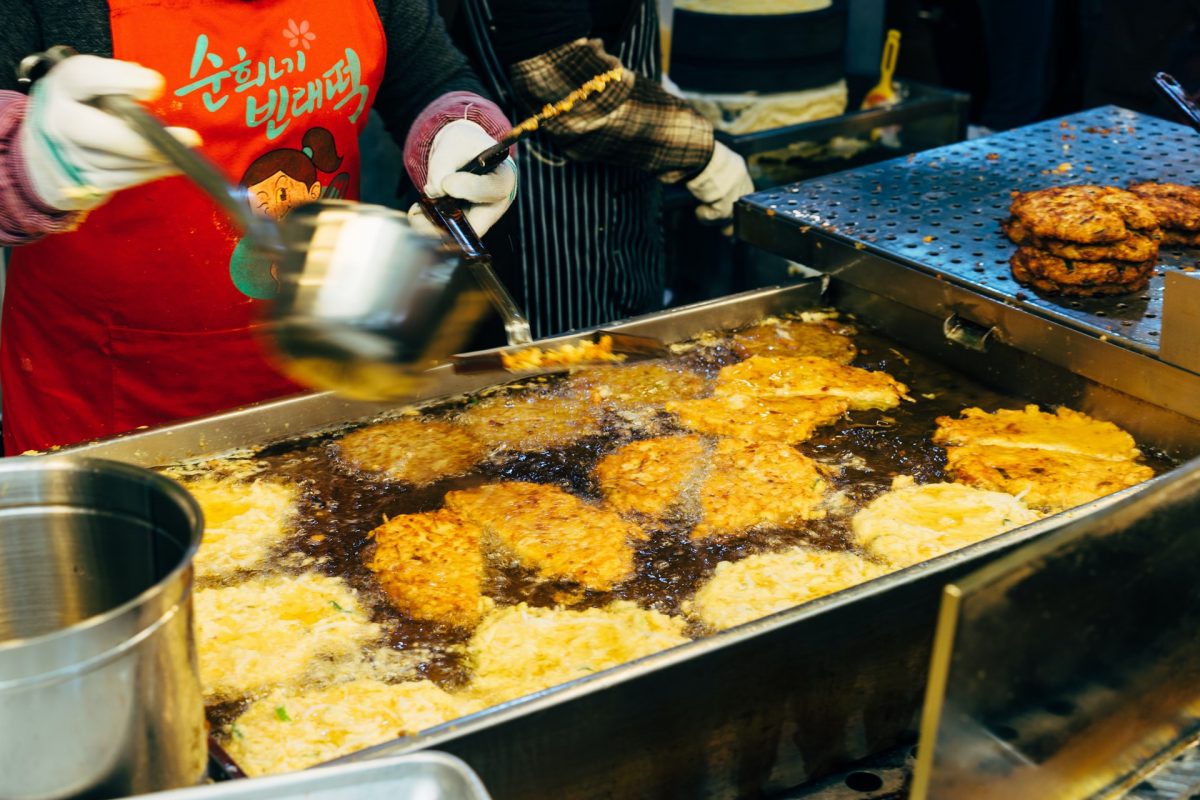
Photo by Markus Winkler from Unsplash
Price: ₩3,000 or around US$2.71
In the earlier times, Bindaetteok earned the reputation of being food for the poor since it is often substituted with meat when worshipping spirits. But times have changed, and Bindaetteok topped the list as one of the favorite all-day snacks in Korea. In fact, it’s one of the snacks Gwangjang Market is known for! So, make sure to not miss this once you get to the market.
Unlike American pancakes, Bindaetteok is made of mung bean powders instead of flour. You can also encounter different variants of Bindaetteok such as pancakes mixed with meat, vegetables, and seafood. Then, they are deep-fried and served hot and crispy. If you want to add more savor to its taste, you can also dip them in soy sauce.
4. Soondae (순대)
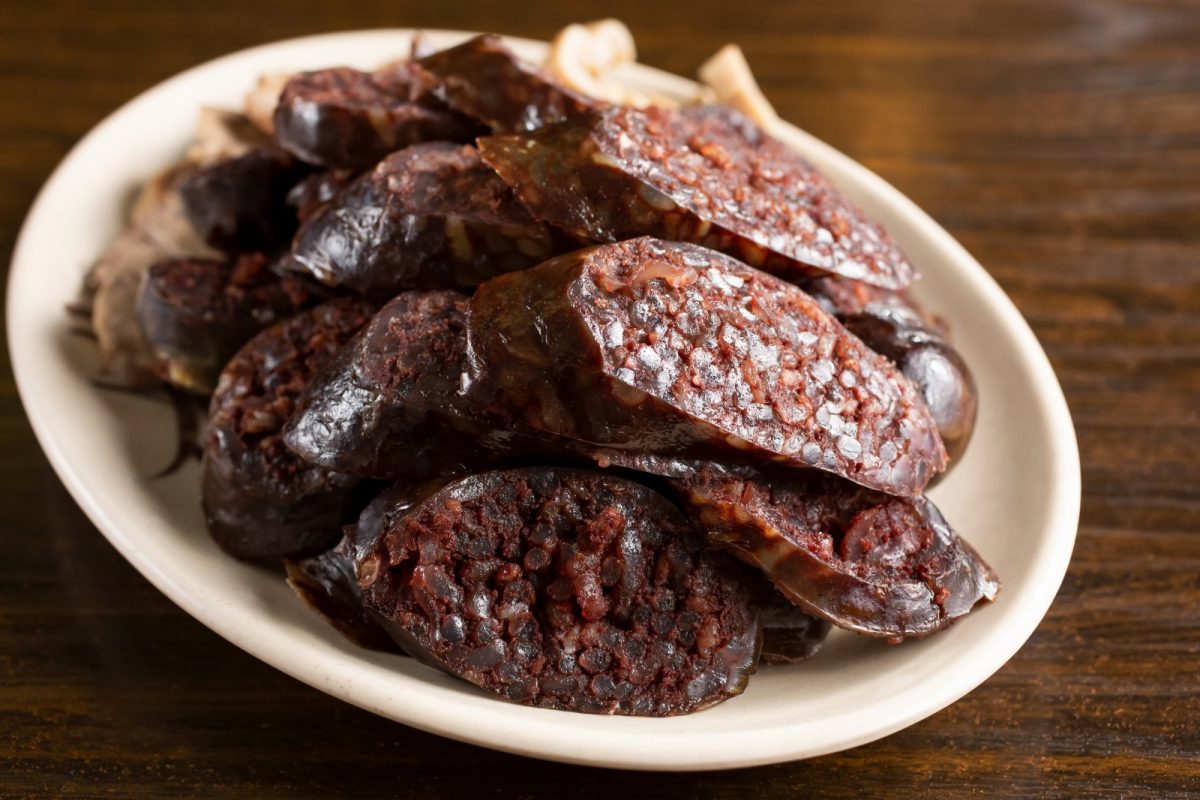
Photo by David from Adobe Stock
Price: ₩10,000 or around US$9
Soondae is one of the bizarre foods in Gwangjang Market. It is made of pork blood, glass noodles, and glutinous rice stuffed in a pig’s or cow’s intestine. Some people find it nasty because it’s in an intestine and made of blood. But to be honest, it doesn’t have a weird taste of anything morbid. It is just similar to a typical sausage and it has a chewy, almost similar to a mochi kind of texture. Just make sure to eat them while they are still fresh.
5. Sannakji (산낙지)
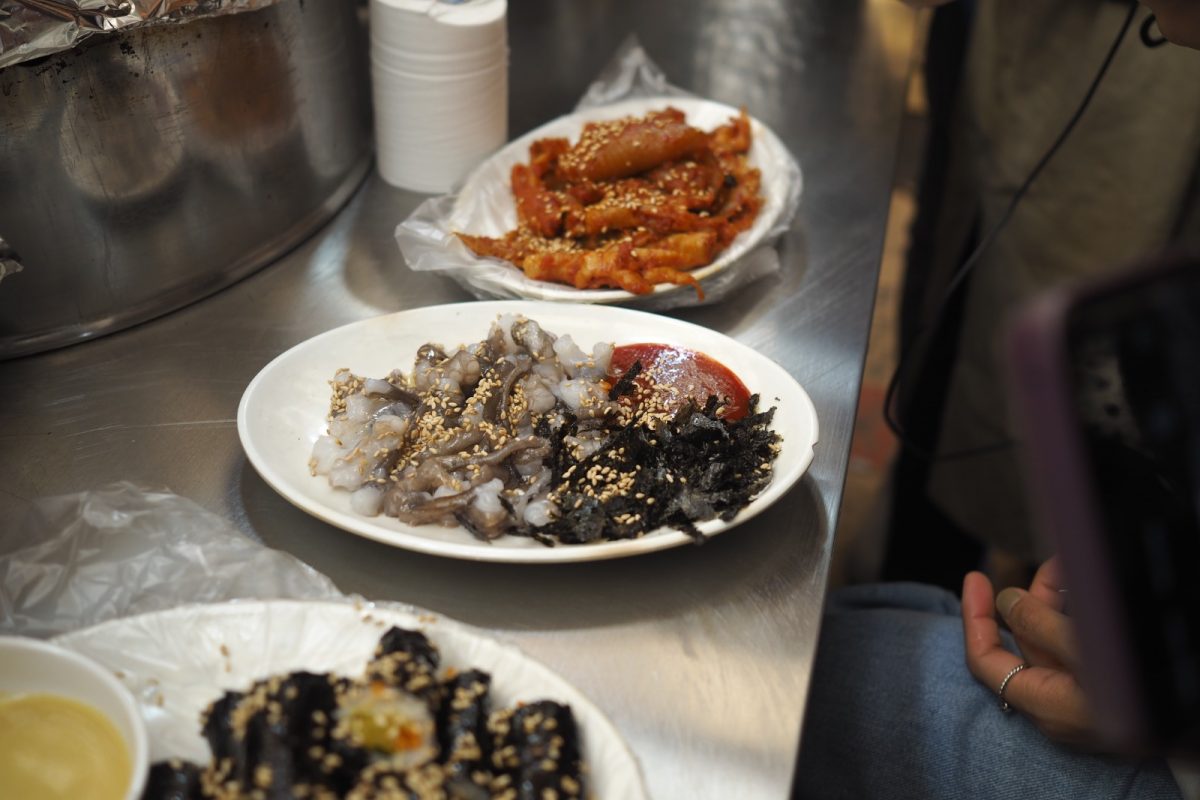
Photo by thanaphon from Adobe Stock
Another bizarre food in Gwangjang Market, Sannakji is practically octopus sashimi. It’s very raw that you will still feel the tentacles squirming on the plate. Sesame oil, sesame seeds, and salt are drizzled on top of the octopus. When you take a bite, you will feel the tentacles squirming on your teeth and tongue. And as you chew them, they will feel slimy yet chewy. Although this may not appeal to most diners, this is heaven for most daredevils. But don’t worry, the octopus is already dead and the movement you’ll feel are just reflexes. So, for sure, you will not choke on an octopus trying to get off your throat.
6. Yukhoe (육회)
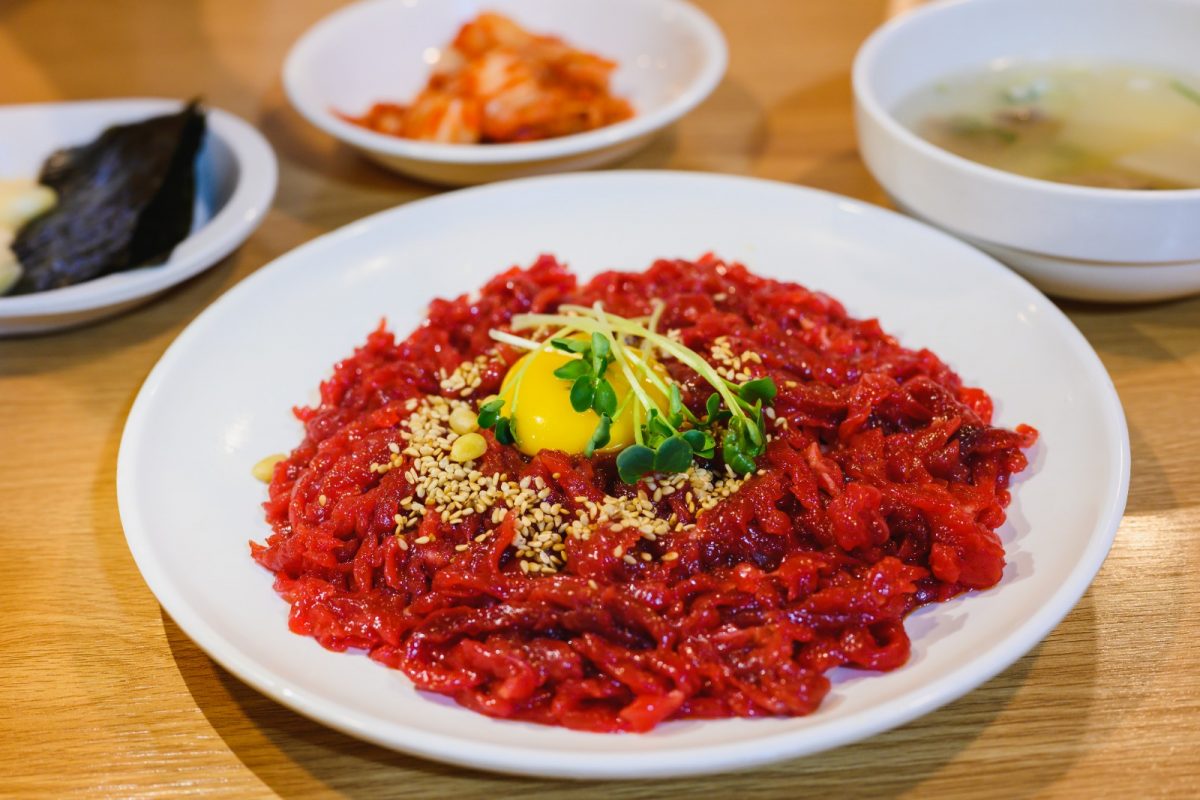
Photo by remiphotography from Adobe Stock
Price: ₩12,000 or around US$11
Similar to Sannakji, Yukhoe is also a raw dish served in Gwangjang Market. Yukhoe is a flavor-packed raw beef often topped with a raw egg yolk. They are often served in strips of red and very tender meat. It also has a garlicky and mildly sweet flavor that you will surely enjoy in every bite. Some people prefer pairing Yukhoe with alcohol because of its distinct and hearty taste. So, make sure to try it too to feel like a local!
7. Japchae ( 잡채)
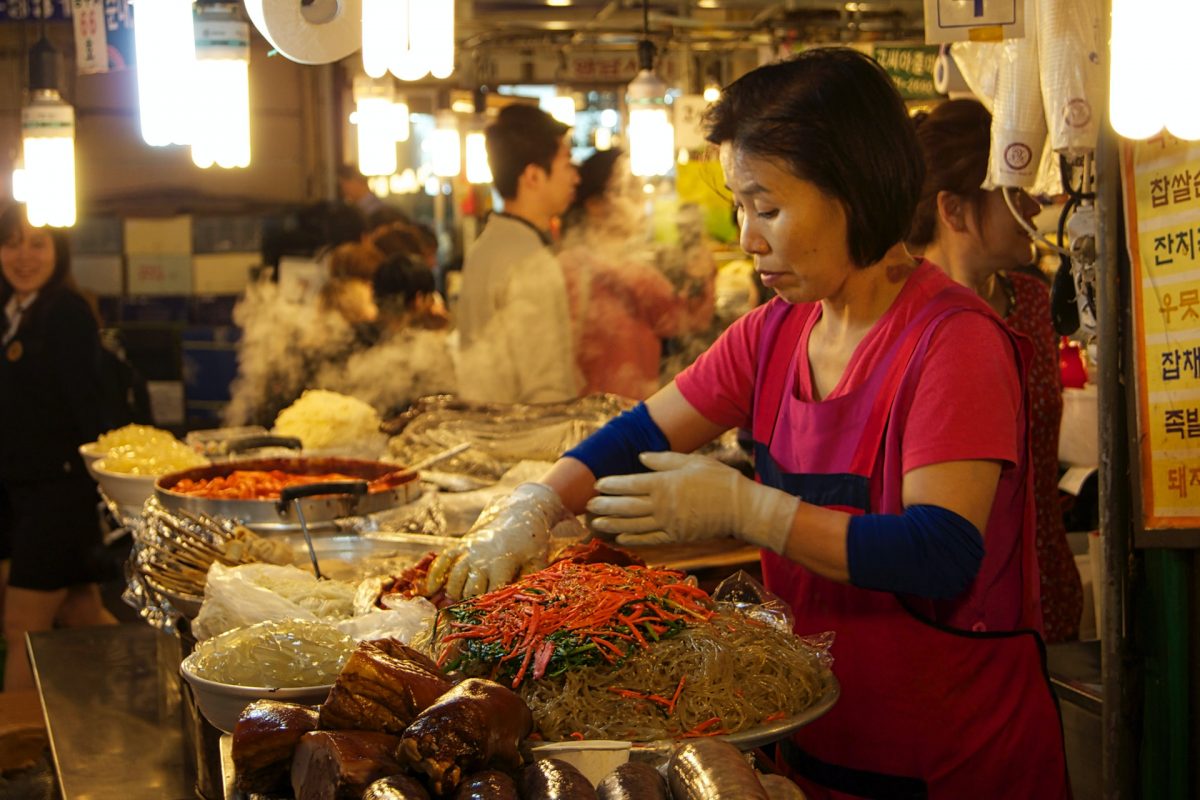
Photo by Mike Swigunski from Unsplash
Price: ₩3,000 or around US$3
If you have tried Pancit Bihon in a Filipino restaurant in the U.S., you will find Japchae quite familiar. Japchae is a stir-fried noodle with crunchy vegetables and chunks of meat. But unlike Pancit Bihon, Japchae is made with glass noodles and it tastes sweeter. Usually, crunchy and fresh carrots, spinach, bell pepper, onions, mushroom, and beef tangle with the bouncy glass noodles. Just a little bit of caution… because it’s too savory, you will find yourself continuously slurping Japchae! Remember to take it slow because there are still other stalls to try.
8. Jokbal (족발)
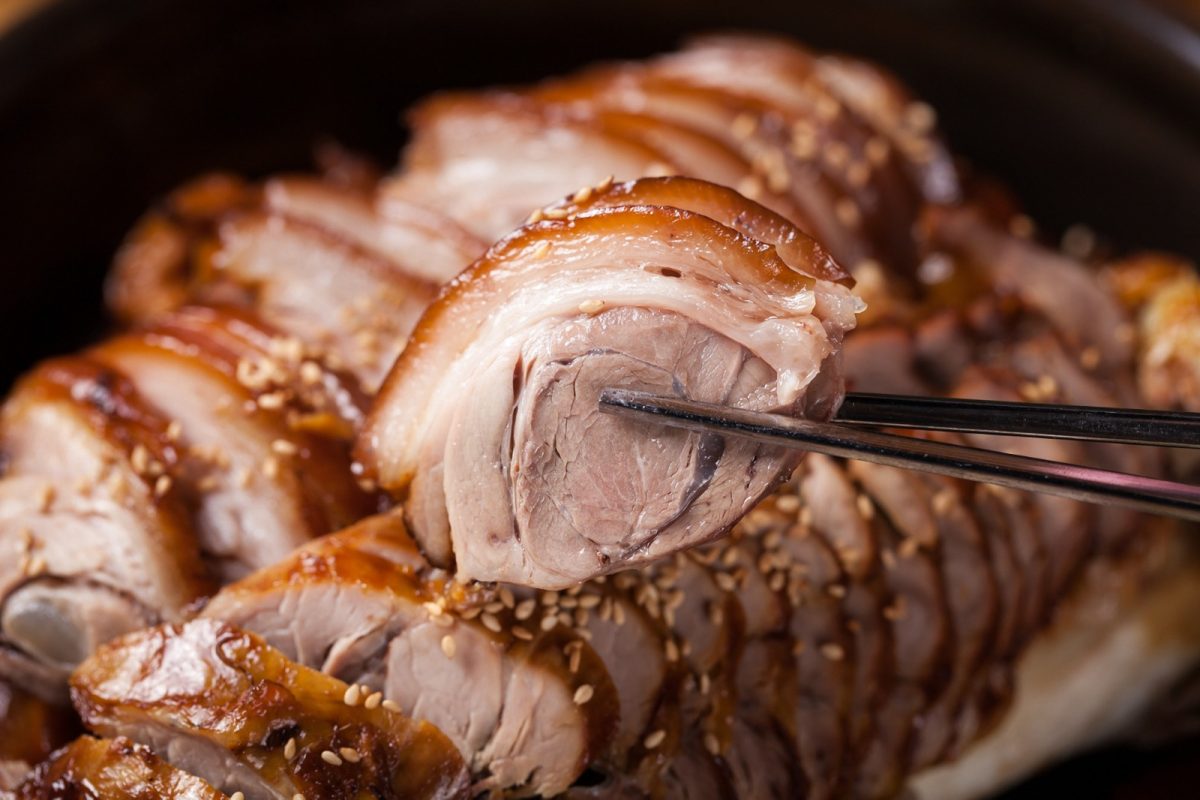
Photo by Minhyoung from Adobe Stock
Price: ₩5,000 or around US$5
Perhaps one of the reasons why you’re into Korean food is because of Korean BBQ. With all the meat variants and flavors available, you’ll definitely agree that an entire pig will be used well in a Korean cuisine — even its feet! Jokbal or pig’s feet is another famous Korean food. It undergoes a rigorous process to make sure that it is perfectly clean and savory. In Gwangjang Market, they pluck all the pig’s hairs, wash the feet thoroughly, and boil them to ensure its clean and tender. Then, they cook them with various spices that each slice will give you a hearty flavor. Usually, it comes with Saeujeot, which is a fermented shrimp sauce where you can dip the Jokbal. This is also a perfect pair to makgeolli or soju.
9. Eomuk Guk (어묵국)
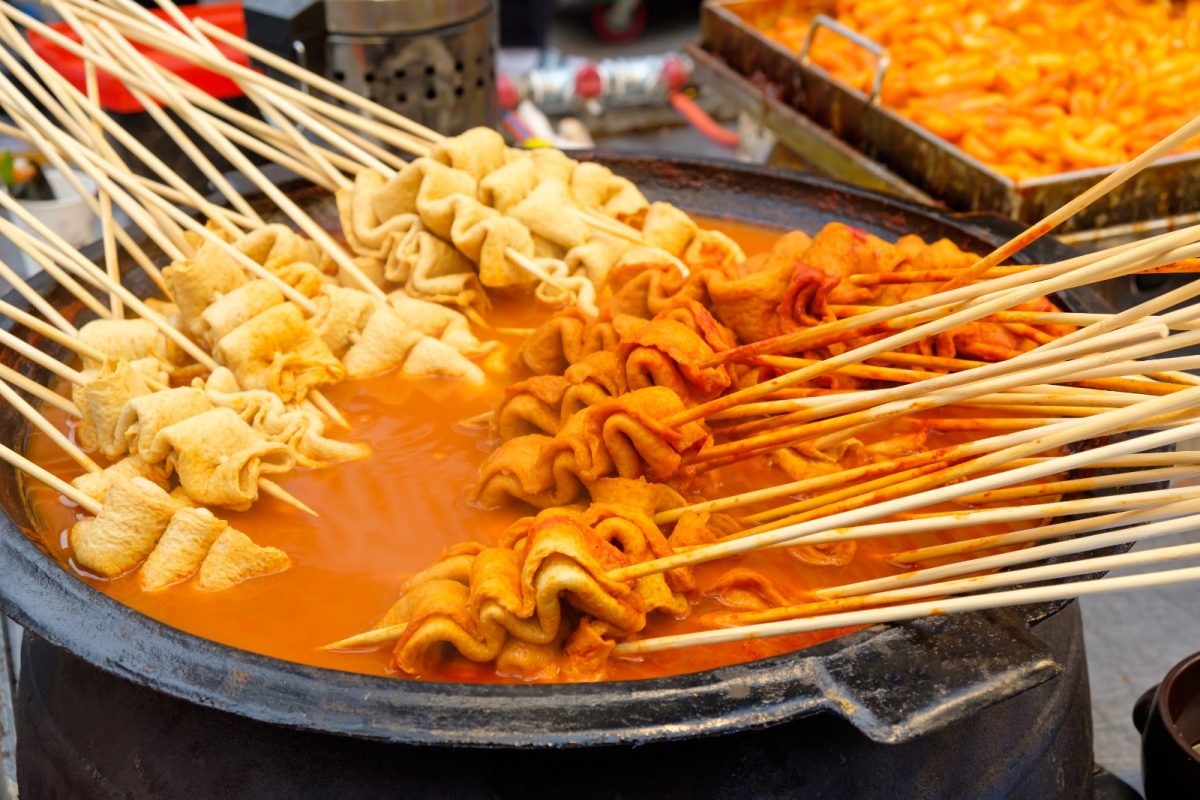
Photo by danielskyphoto from Adobe Stock
Price: ₩1,000 or around US$1
Eomuk Guk or sometimes also called Odeng Guk literally translates to Fish Cake Soup. This is one of the comfort food that you will definitely enjoy in the colder seasons in Korea. If you’re watching Korean dramas, you’ve probably seen them chomp some brown food in a skewer. Well, that brown food is the Eomuk. It is made of surimi (a paste made of fish), wheat flour, carrots, onions, and other additives. But most of its flavors depend on the broth where it was boiled, which is usually made of kelp and anchovy. So it’s a mix of briny and sweet flavors. Sometimes, you can also see some stalls in Gwangjang Market that sells Tteokbokki as well, so it’s common for some to pair them both.
10. Mandu (만두)
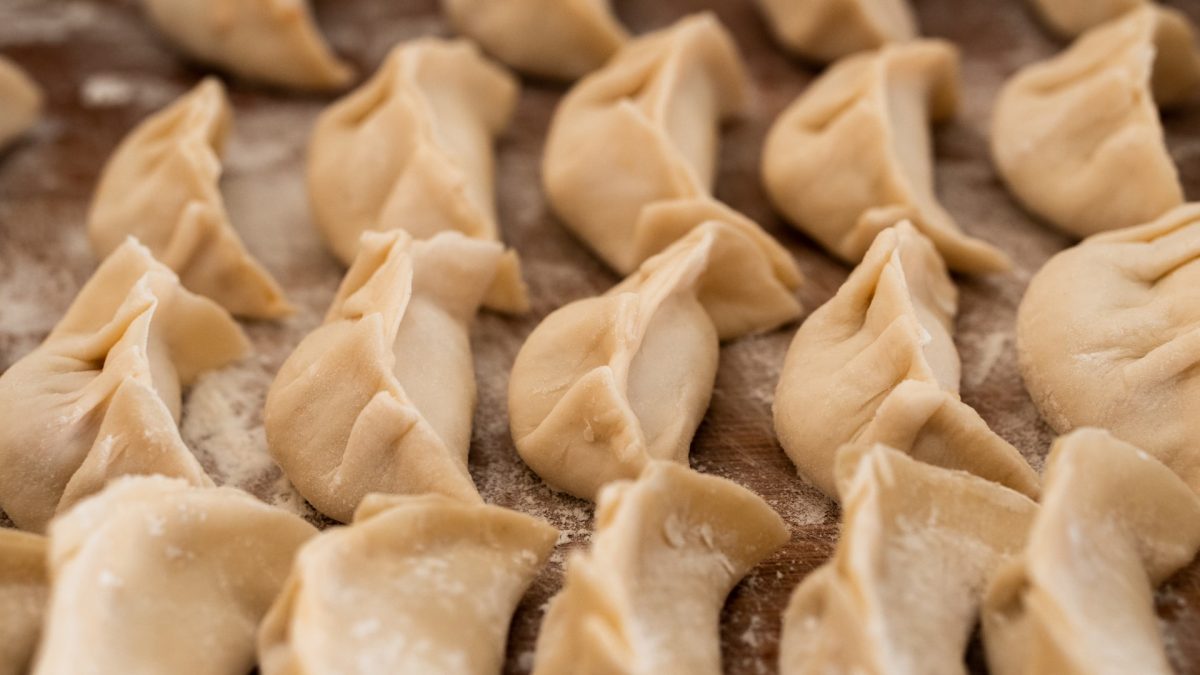
Photo by qi xna from Unsplash
Price: ₩3,000 or around US$2.71
The Korean version of dumplings, Mandu is not far from the Chinese dumplings or Japanese gyoza. It also has ground meat with vegetables fillings. The difference usually lies in the quality of meat. But don’t worry because Gwangjang Market doesn’t disappoint. You can relish plates of Mandu that are either steamed or fried. But either way, you’ll definitely enjoy them!
11. Kalguksu (칼국수)
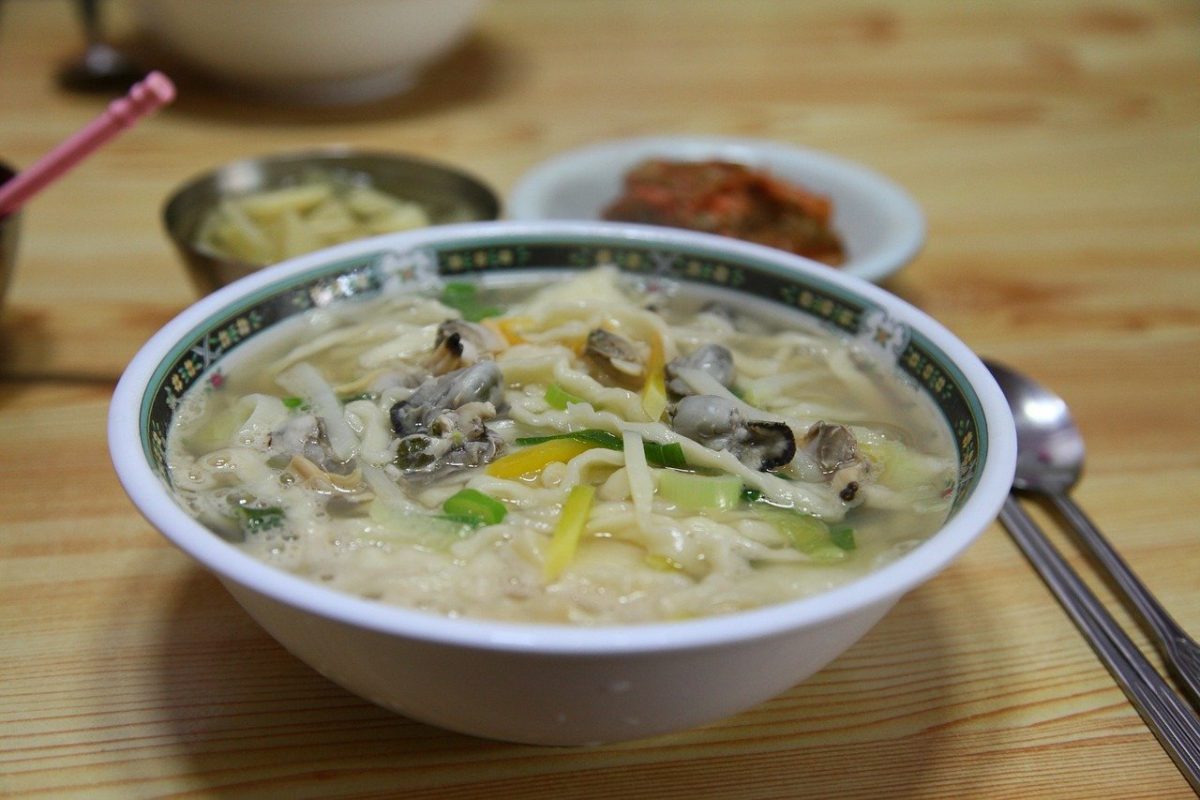
Photo by JeongHO Suh from Pixabay
Kalguksu is another option of comforting food during cold days. If you are familiar with Jjampong, which is a spicy seafood noodle, Kalguksu is the not spicy version of that. Kalguksu uses thicker knife-cut noodles soaked in a mix of anchovy and chicken broth. The taste is very familiar and you will just find yourself enjoying every slurp. In Gwangjang Market, you’ll see it topped with clams and seaweed. You’ll also see strips of vegetables like carrots, pumpkin, and potatoes. This kind of noodles is very simple yet tasty.
12. Bungeoppang (붕어빵)
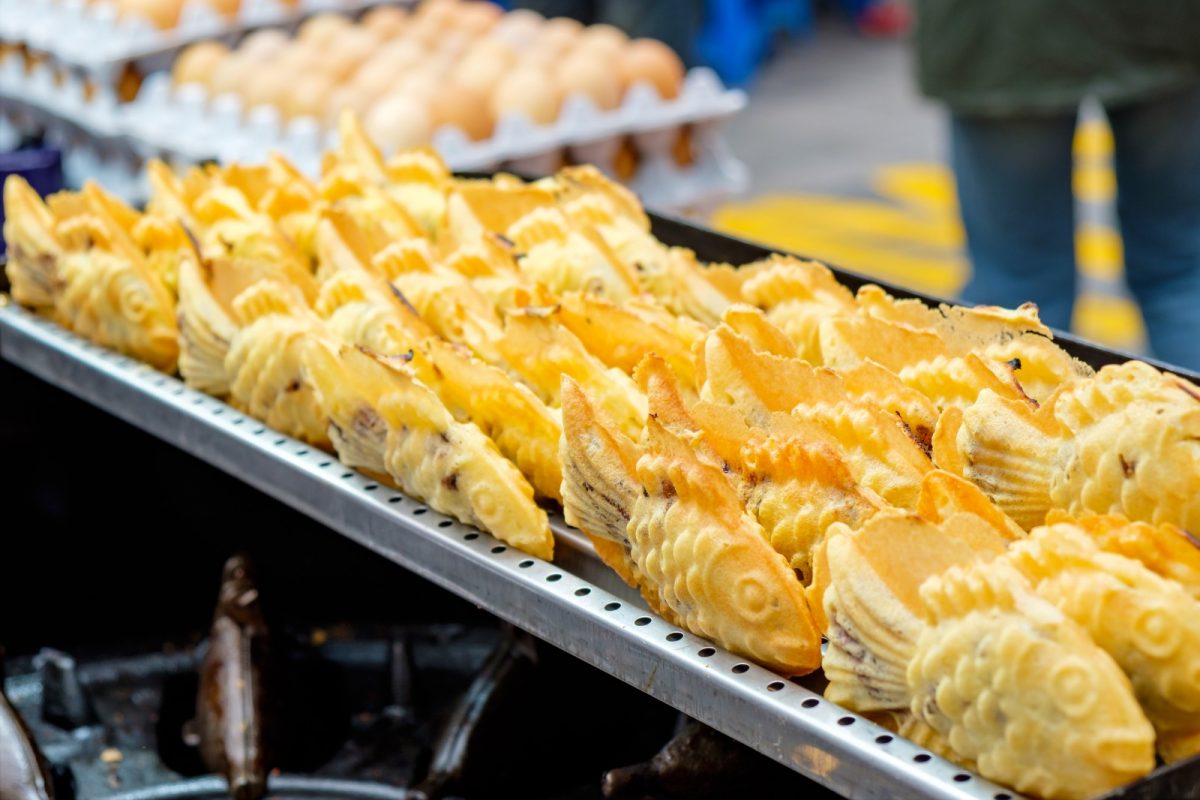
Photo by danielskyphoto from Adobe Stock
Price: ₩1,000 or around US$1
Bunggeopang is an adorable-looking pastry that is a must-try in Gwangjang Market. This fish-shaped bread is very crisp and the sweetened red bean bursts in your mouth in every bite. But aside from the sweetened red bean filling, you will also find custard-filled bungeoppang, which is very attractive to most children and, of course, to those young at heart.
13. Hotteok (호떡)
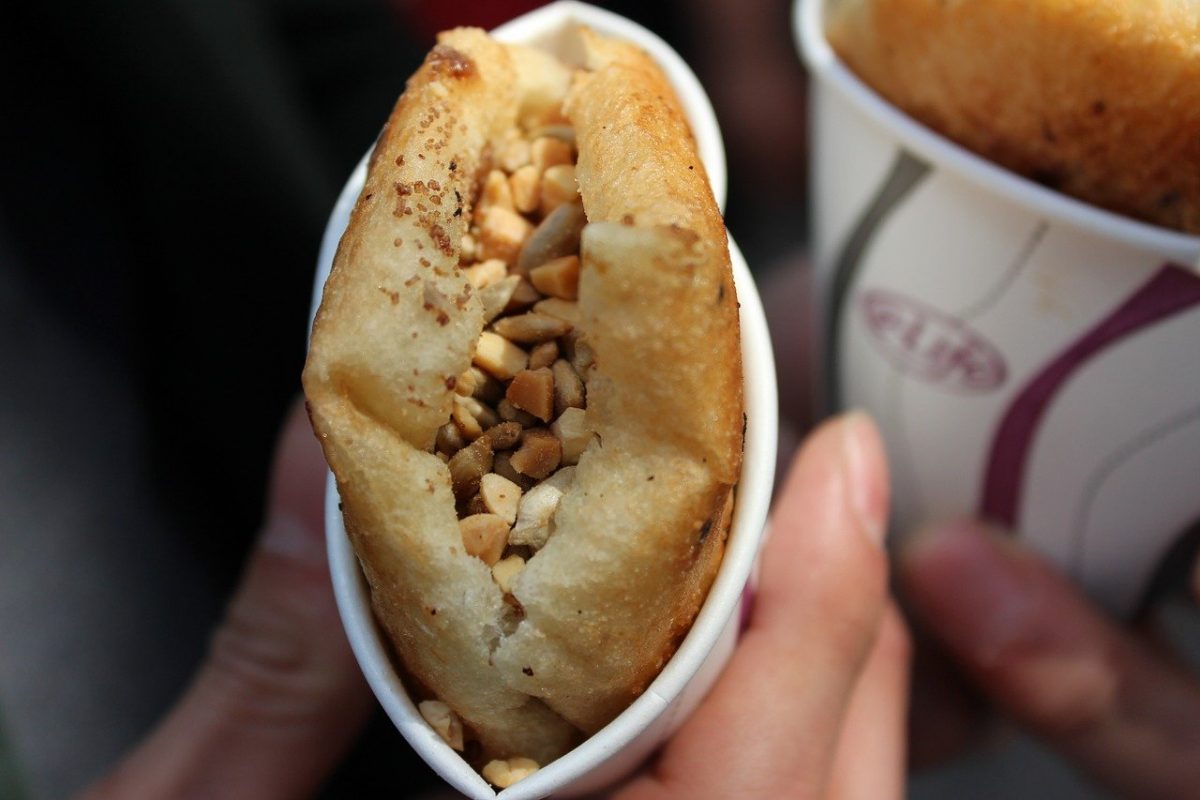
Photo ny Seul5167 from Pixabay
Price: ₩2,000 or around US$2
Another type of Korean pancake, Hotteok is one of the popular winter snacks. It is often served in a cup and it’s made of yeasted dough filled with cinnamon sugar, honey, or seeds. They are also fried, but expect it to be quite crisp on the outside and soft on the inside. If you’re not that sure about Bindaetteok, try Hotteok instead. It is quite close to the sweetness of the usual American pancakes drizzled with syrup.
14. Makgeolli (막걸리)
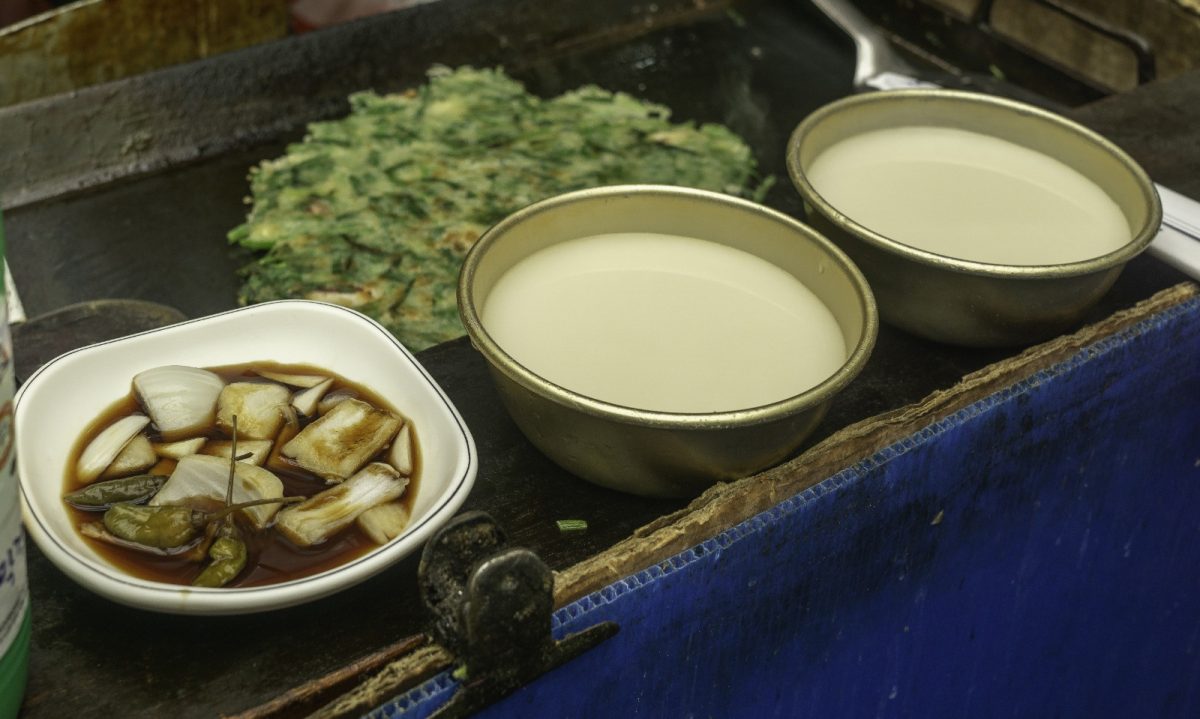
Photo by Nicolas from Adobe Stock
Price: ₩5,000 or around US$5
Usually paired with Bindaetteok, Makgeolli is a traditional Korean liquor. It is made from fermented rice, and it looks similar to milk. As you pour it, you will see that it has a very chalky and fizzy liquid. Unlike most liquors, Makgeolli is undistilled so you need to give it a good shake first before pouring. Because of its high nutritional content, people call it the “farmer’s drink”. But similar to most liquors, it also has a robust taste: bitter and sour with a tinge of sweetness. Also, most traditional Makgeolli has 12% to 18% alcohol content. Generally, most of Makgeolli sold in Gwangjang Market only have 6% to 9% alcohol content. Some say most companies have diluted the Makgeolli to make it easier for most people to gulp down a refreshing drink without the most hassle of a hangover.
15. Sikhye (식혜)
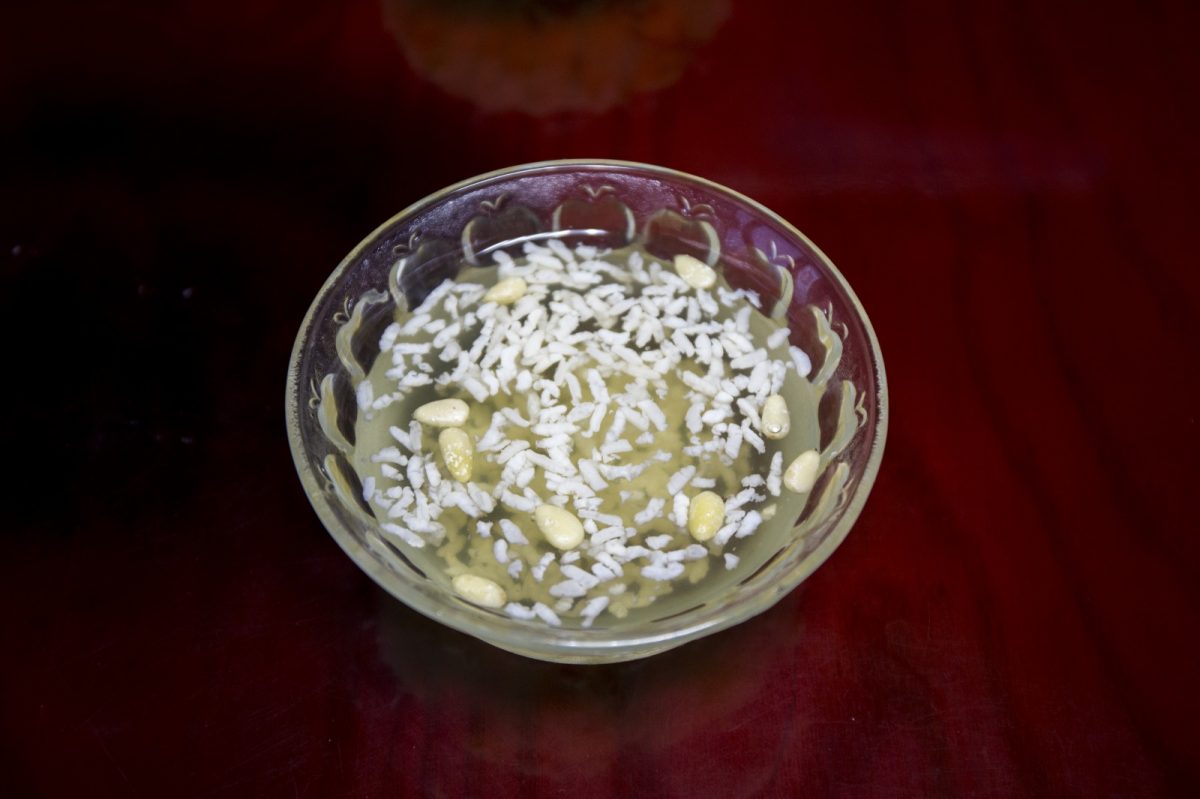
Photo by GEOLEE from Adobe Stock
Price: ₩1,000 or around US$0.91
If you’re not a fan of alcoholic drinks, you can try the non-alcoholic and healthy drink called Sikhye. This is a traditional drink from rice and sweetened sugar. In Gwangjang Market, you’ll see stalls with huge glass buckets of Sikhye. Then, vendors scoop them into your glass.
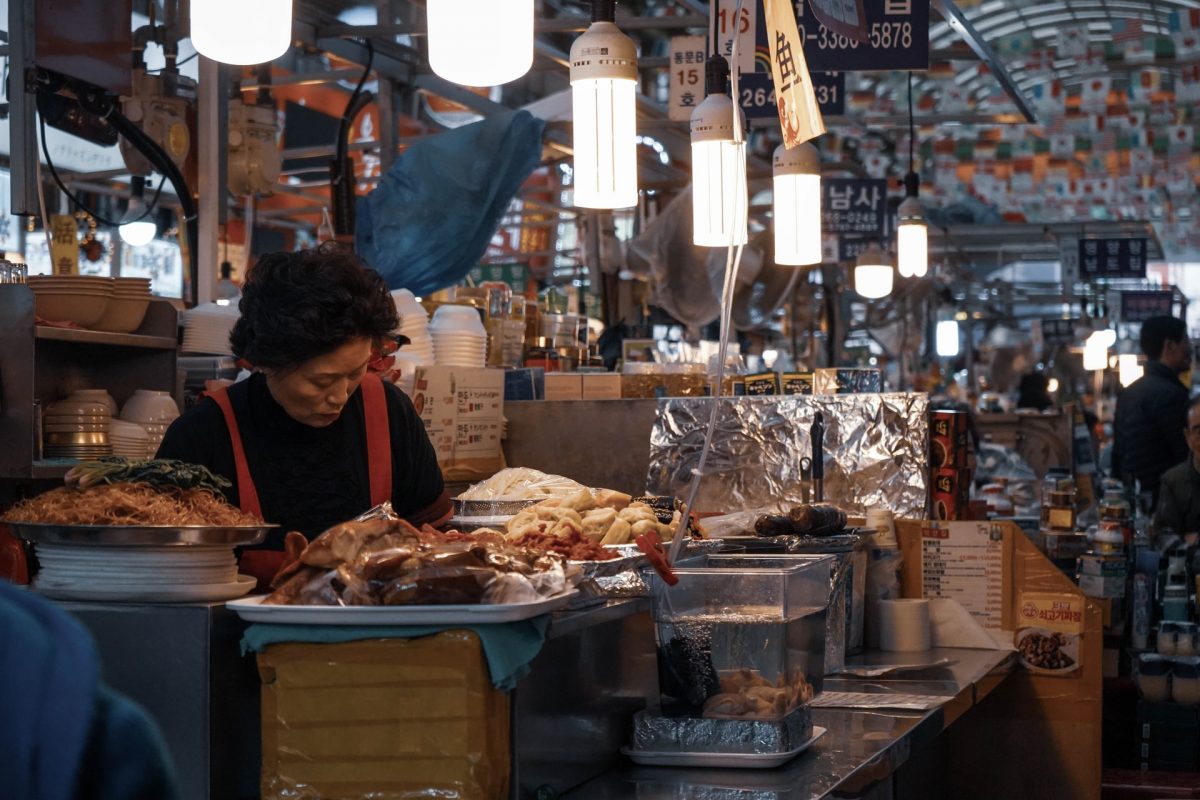
Photo by Moujib Aghrout from Unsplash
Tips to Remember when Visiting the Gwangjang Market
Eat Moderately
This is the number one rule! Consider your Gwangjang Market food trip as a buffet dining. There are a lot of dishes to choose from, whether you prefer rice, soup, or meat. Since there will be a lot to taste and try, don’t pick your favorites very early. Instead, taste different dishes in each stall and restaurant in small servings. If you’re coming with someone else, try to share the plate with them first. This way, you will not only save money but you will also have room in your tummy to taste various food. By the time you finish and your tummy still has room, that’s the time you can head to your favorite dish and buy again.
Bring enough Cash
While there are some restaurants that will accept cards, there are also some that would require an additional 10% if you’re going to use your credit card or debit card. With this, it’s more reliable to bring cash for easier transactions. Usually, you can bring around ₩30,000 to ₩50,000 won. You can bring more if you’re coming with other people or you’re planning to buy souvenirs, clothes, and other items in Gwangjang Market.
Bring Reusable Utensils
Although there are available sticks, plates, and utensils when dining. You can also help reduce waste and practice sustainable tourism. You can also order a water jug and utensils from Amazon to bring with you on your food trip!
Bring Alcohol and Wipes
Make sure to brace for the crowd since since it’s a market and a tourist spot. And, for sure, you’ll also find yourself touching a lot of things to buy. So, always bring alcohol and wipes to ensure that your hands are clean when eating. You can also use the wipes to clean your seat, utensils, or if you splattered some sauce on the table or your hands.
Let’s go to Gwangjang Market!
From dishes that will comfort you in the cold weather to those that will quench your thirst under the summer heat, you will find them all in Gwangjang Market. Just remember to eat moderately so that you’ll be able to taste a lot of dishes. Also, don’t forget to bring enough cash for easier transactions. Enjoy your food trip!

